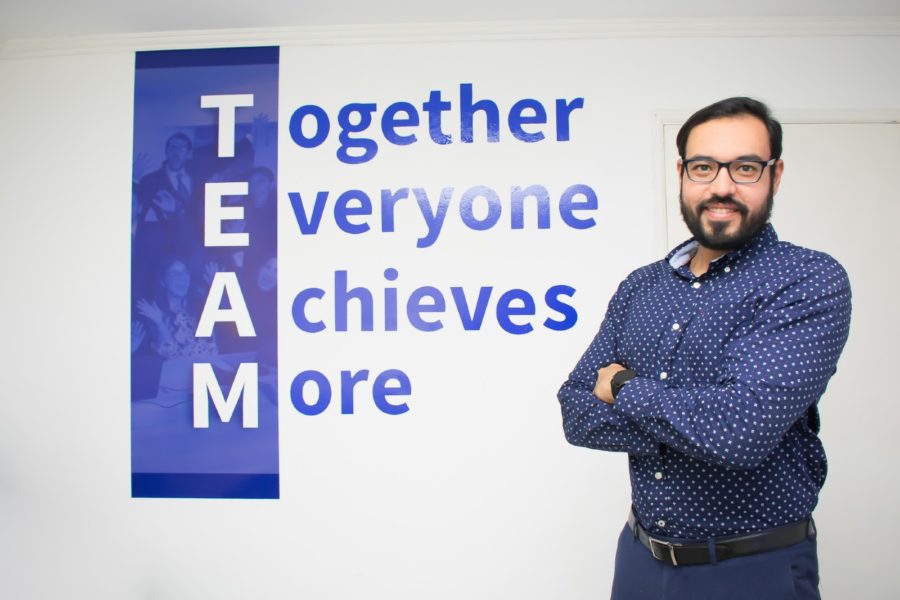A team is a group of people organized to achieve a goal, while a high-performance team is one that shares winning beliefs, passions, attitudes, and thoughts. There are teams that achieve extraordinary results, no matter how difficult the objective may be. They are high-performance teams and they are found in all professions and fields. It varies greatly in size, structure, and purpose. Although each team is unique, all high-performing ones share common characteristics that we’ll talk about here.
Regardless of the member’s goals and aspirations. Building high-performing teams, like building a great organization, begins with a picture of what you want, a goal. In the end, behind a high-performance team, there’s always a high-performance leader commanding.
Highly skilled employees make a high-performing team

They are the ones who feel supported by their managers and have a unified purpose to drive team and business success.
In a high-performance team, its members are committed, unified, and motivated. Those teams assume different roles, as long as they know the goals to work on and are highly integrated.
What are the qualities of a High-Performing Team?
They are empathetic people, who know how to listen and have a great sense of commitment. They are also flexible people with high emotional intelligence and developed soft skills. Always willing to collaborate and optimize the use of available resources. Members of these teams are focused on the goal and also committed to the organization.
Above all, they are qualified and well-trained people.
Why do some teams perform better than others? What sets these teams apart from the rest?
Broadly speaking, there are four main variables that any team must consider:
1. Objectives to achieve.
2. Tasks to play.
3. Functions to run and.

4. Roles to perform.
For a team to perform well, there has to be a total alignment between these four variables.
As we all know, interpersonal relationships are not easy and they often don’t respond to rational criteria. The variables mentioned above are managed by people, so their attitude towards them it’s fundamental. Among other important aspects (motivation, level of training, etc.), it depends a lot on the personality of each member. Besides, it is proven that having a good environment offers a positive impact on the results.
PERFORM model
When you know where you are going, the path leads you to your goal. It is important to know what a high-performance team is and what elements characterize it. Ken Blanchard has identified seven key characteristics of all high-performance teams. This is deeply explained in the book “The One Minute Manager Builds High Performing Teams”.
PERFORM stands for Purpose and values, Empowerment, Relationships and Communication, Flexibility, Optimal Productivity, Recognition, and Morale. No matter the year, managers will look up to these values and consider integrating them into their organizational culture.
We summarized below the seven keys of the PERFORM model:

P stands for Purpose and values:
To create high-performance teams, they must share goals and values, with a vision and a clear mission. It’s like an orchestra, everyone knows their role and they all go into action together to make a magnificent performance. They also know that if just one person or instrument fails, it will affect the overall performance.
E stands for Empowerment:
This is to say that it’s important to allow people to bring their wit to work, providing them the experience and motivation to achieve the expected results. All this with the possibility to use their knowledge. For this, it is necessary to develop an environment that lets people’s knowledge, experience, and motivation thrive.
Even by delegating leadership to the person on the team who has the best ability to carry out a task… If the team trusts themselves and their abilities, if they are autonomous, and they know how to adapt to each moment, then achieving the goal is practically guaranteed. This is what is known as a “learning organization”.
R stands for Relationships and communication:

In a high-performance team, communication flows freely and with respect. Team members are usually active listeners with a broad sense of community work, respecting and supporting each other.
F stands for Flexibility:
A high-performance team is flexible. They must be self-directed and establish wide margins to set their lines of action with autonomy to execute them. Successes and failures are collectively assumed to identify what has failed.
O stands for Optimal Productivity:
Productivity is the bottom line. A high-performing team has the commitment to produce significant results. Through the interest of each member, these teams manage extraordinary results in the continuous process of improvement.

R stands for Recognition:
Feedback is essential for the proper functioning of a high-performance team. Recognition and appreciation are powerful ways to motivate and improve performance. Recognition reinforces behavior, builds esteem, and increases feelings of worth and accomplishment.
M stands for Morale:
Morale manifests itself by causing the team members to feel that they belong to something beyond themselves. Naturally, having explained the meaning of the previous points, morale means that members truly belong to a team.
Each person is unique, and so is every team
High-performing teams are easily recognized by their results, and by all the characteristics that we mentioned. But as much as you try to define and build a “perfect” team, you can’t. What makes teams great is their uniqueness as a group and as individuals — no two people are the same, but they can each be great on their own accord, and when they’re put together to enhance their abilities (and performance) anything’s possible!





